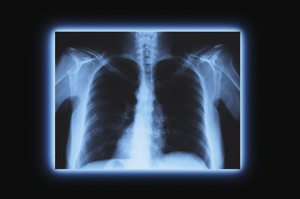Combining Claims Processing with X-ray Scanning—How Hard Can It Be?

Anyone who has experience will tell you that automating insurance claims with X-ray scanning is a multifaceted and time-consuming process. Dental claims include a number of different forms, supporting documentation and patient X-rays, all of which must be properly classified, sorted, scanned and filed.
The X-rays come through as high-resolution prints and also as film X-rays. Digitising film X-rays requires a separate process with highly technical and expensive equipment. The process also includes added work to apply barcode labels to track those X-rays and their associated claims documents.
Dentegra is a specialist provider of Dental Insurance plans in the US. It serves enrollees in both commercial and government-sponsored programs. Recently, it successfully implemented a combined solution from OPEX Corporation and servicebureau Mavro Imaging to automate its commercial claims process. With this success under their belt, Dentegra turned its attention to a more ambitious automation project: improving claims processing for a large government client.
The high volume of claims processed through this program not only includes the usual mix of claims documentation but also a much larger volume of X-rays. The X-rays come through as high-resolution prints and also as film X-rays. Dentegra processes as many as 25,000 claims daily for this client alone.
While the document processing component of the solution would function for this government client just as it did for Dentegra’s commercial claims, X-ray film presented a significant challenge. Under the existing processes, the X-rays (which could not be scanned on a traditional scanner) were physically separated from the claims documents, then organised and stored separately.
To match the documents, staff used barcode labels on the X-rays and claims documents. X-rays were then filed in a separate storage area. If an adjudicator needed to see the X-ray later, a request was placed for the film. Staff then had to search the X-ray files for the matching date to find the films, which took a significant amount of time.
In order to successfully automate claims processing for this operation, Mavro and OPEX had to develop a way to automatically scan film X-rays using OPEX Falcon, the universal document scanning workstation.
An Innovative Solution
The combined OPEX and Mavro team collaborated closely to develop a workable solution that would allow Dentegra to automate the scanning and batching of X-ray film in a way that would not disrupt the claims scanning operation.
Operators pull contents from each envelope and drop them onto the Falcon scanner rollers. Falcon ‘singulates’ the contents and scans the documents. To solve the problem of scanning and batching the X-ray film, OPEX and Mavro incorporated a light table on the scanner and attached a separate camera protected from glare using a specially developed shield.
Printed X-rays are scanned by the Falcon scanner in high-resolution colour. Film X-rays are pulled from the envelopes and placed beneath a Canon SLR high-resolution camera that is mounted to the Falcon scanner and positioned above the light table. A companion application developed by Mavro allows the operator to take an image of the X-ray and include it with the other documents associated with the claim.
“We can scan not only paper X-ray prints but also high-quality film X-rays,” says Francoise Thimon, Manager of Consolidated Mail Services, Dentegra. “We don’t have to sort documents manually because the intelligence behind the scanning equipment can do that for us.”
Enough To Make You Smile
In addition to the labour-saving, efficiency, and employee satisfaction benefits realised on the commercial side, the government client operation has also experienced an improvement in the adjudication process. This is because adjudicators no longer have to request and then wait for the X-ray film. The images are immediately available, as are all documents (in some cases, this can even include an image of the original envelope).
“The solution was revolutionary for us,” Thimon says. “Automatically sorting and batching the documents is much faster than our manual processes. We’re no longer processing paper and X-rays separately and then matching them later on. Now it’s all done in one transaction.”
Intelligent claims processing has made it possible for Dentegra to improve efficiency and reduce manual labour. Now that the solution for the government program is up and running, Dentegra has plans to expand the OPEX/Mavro system to its claims processing operation for other government clients.
